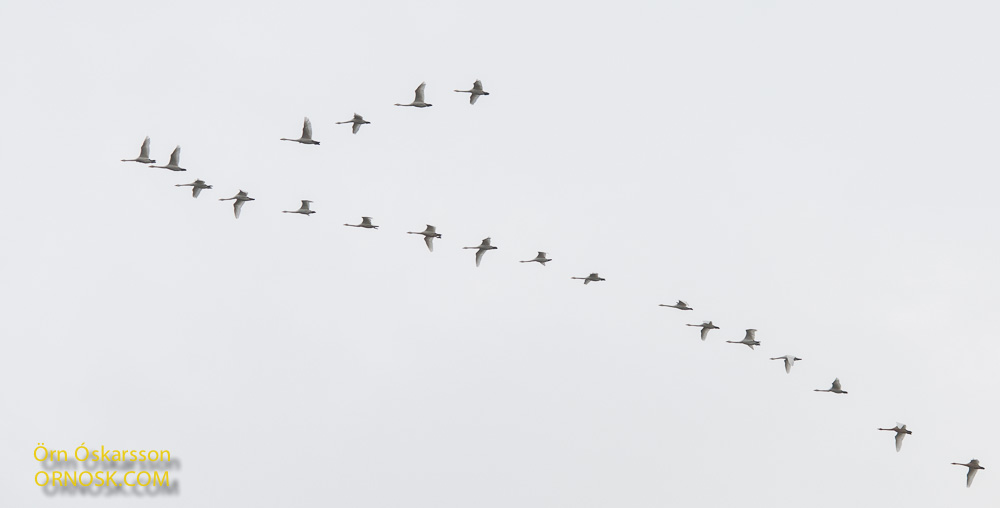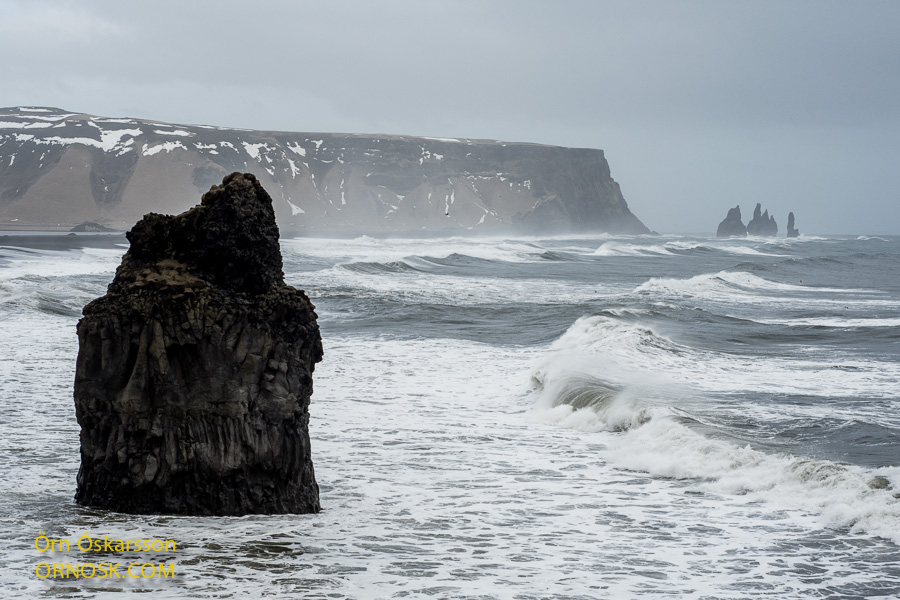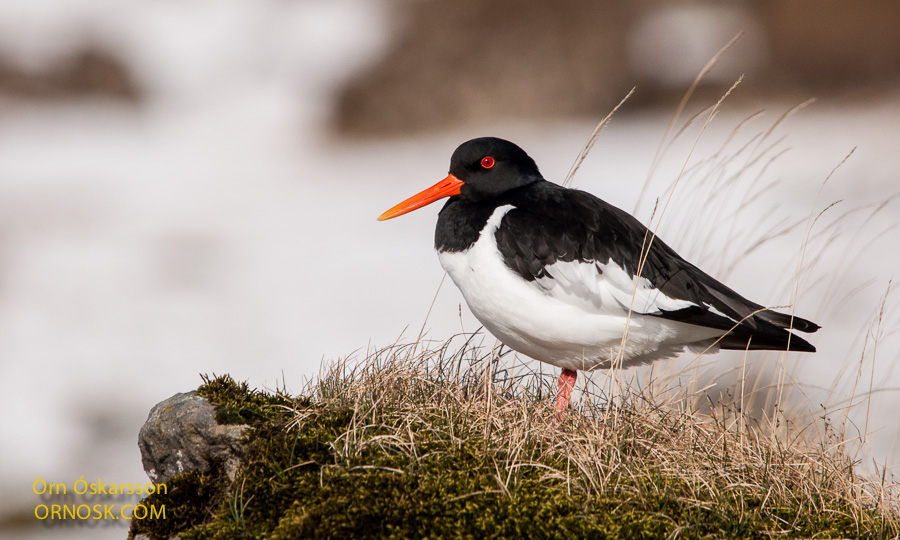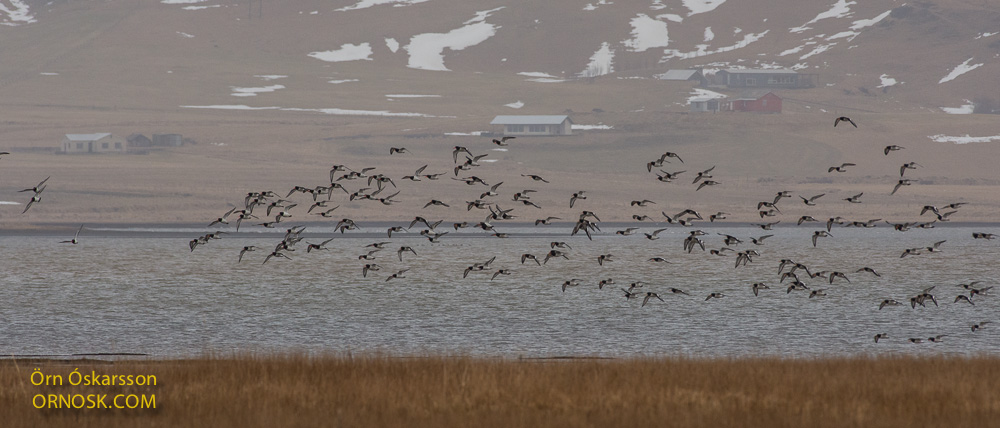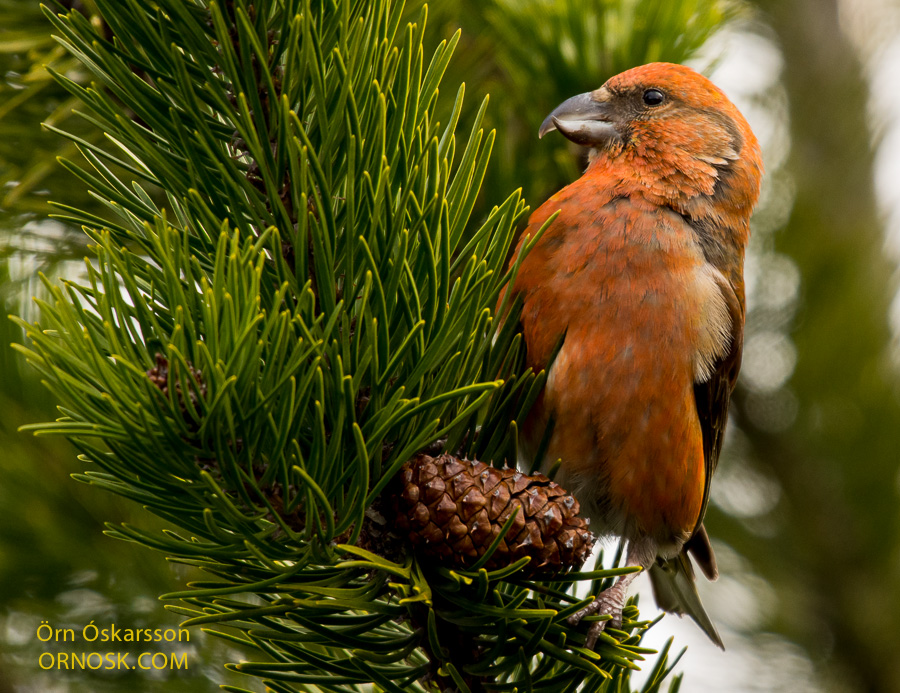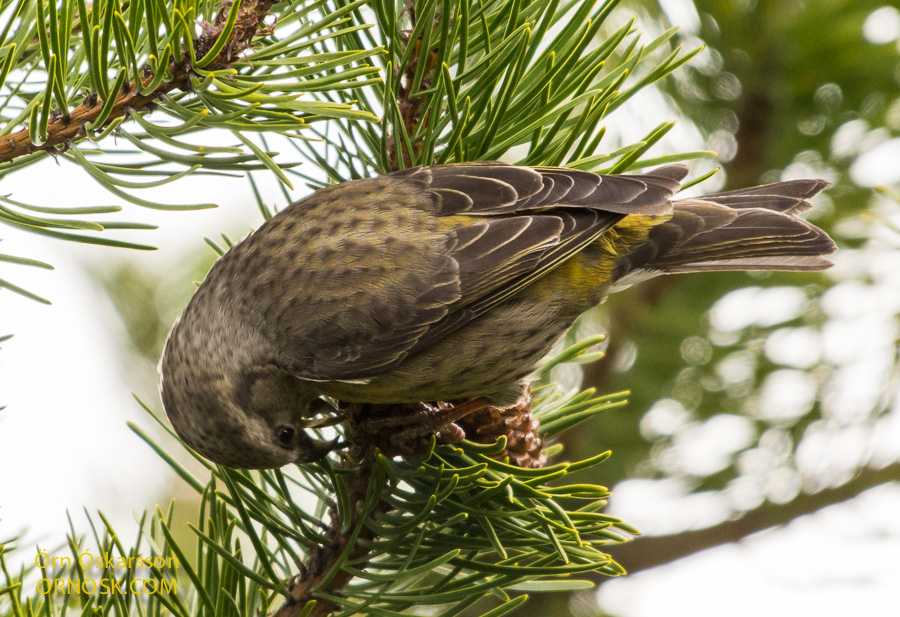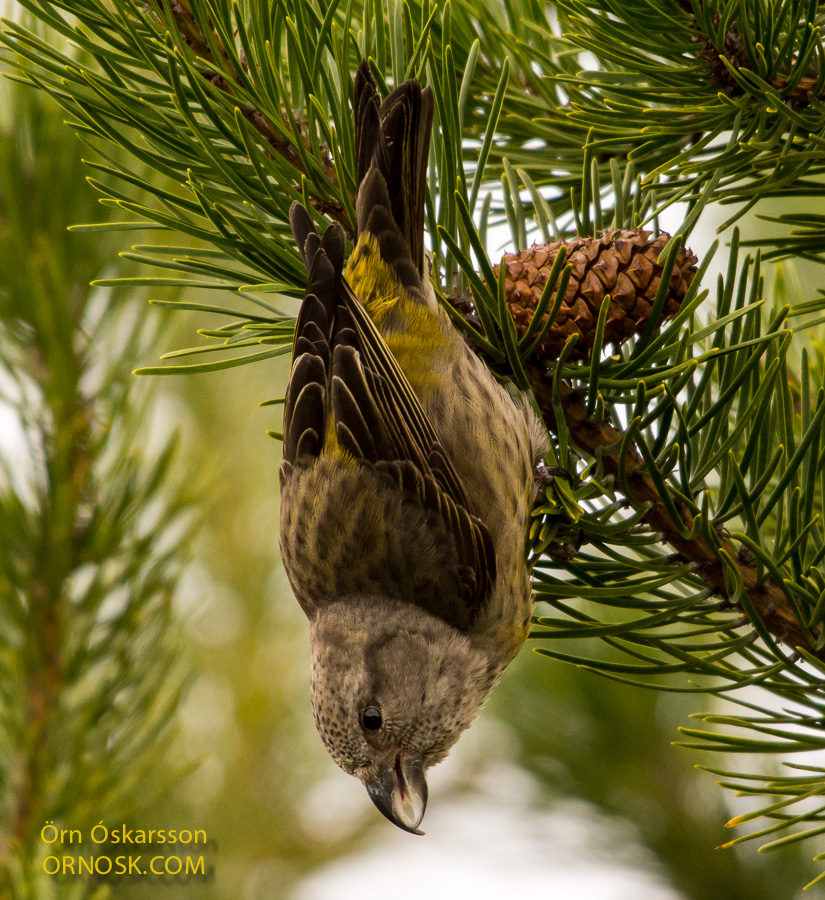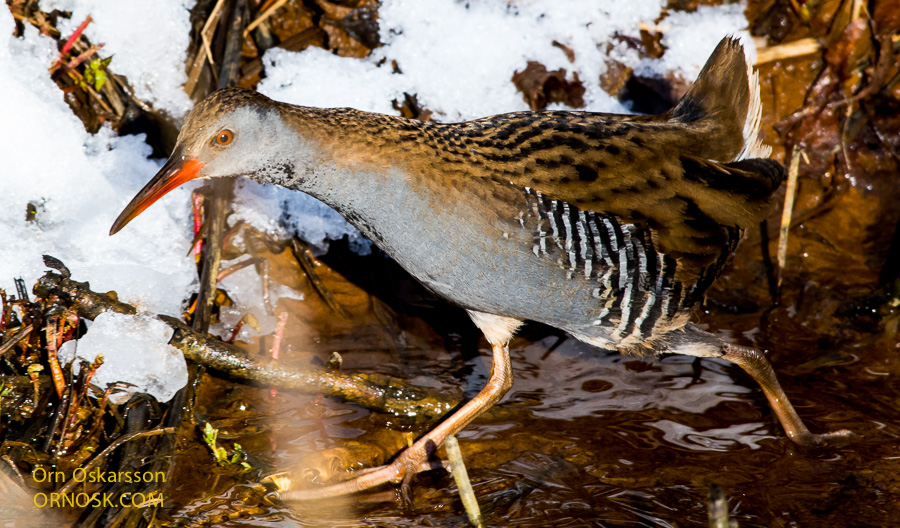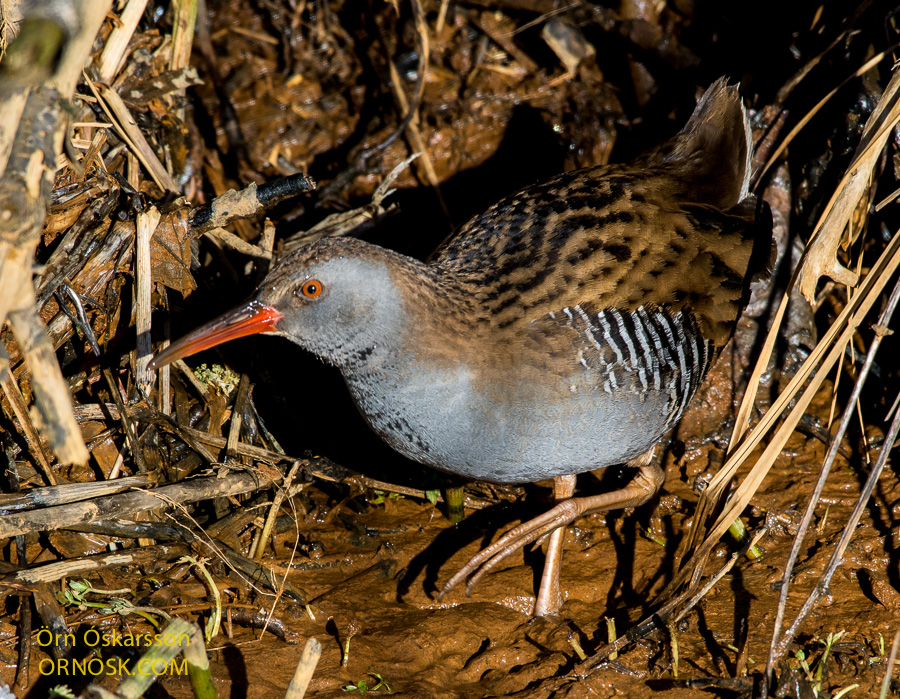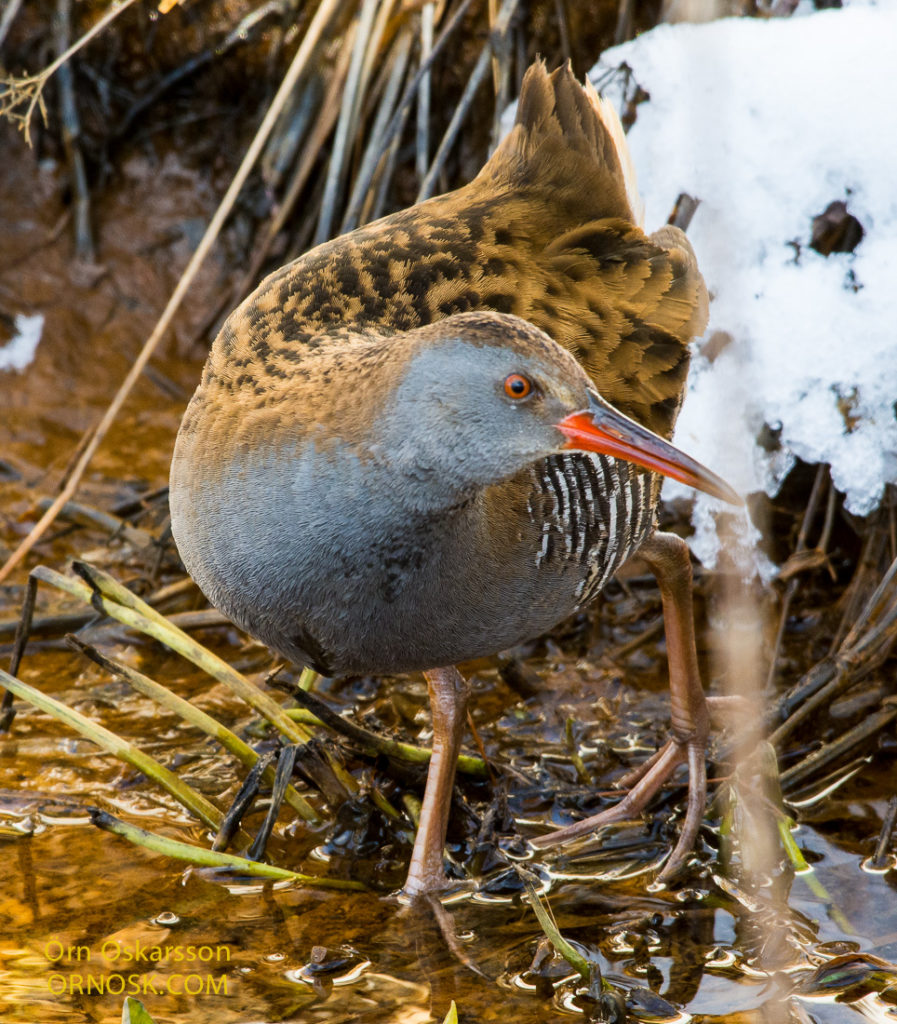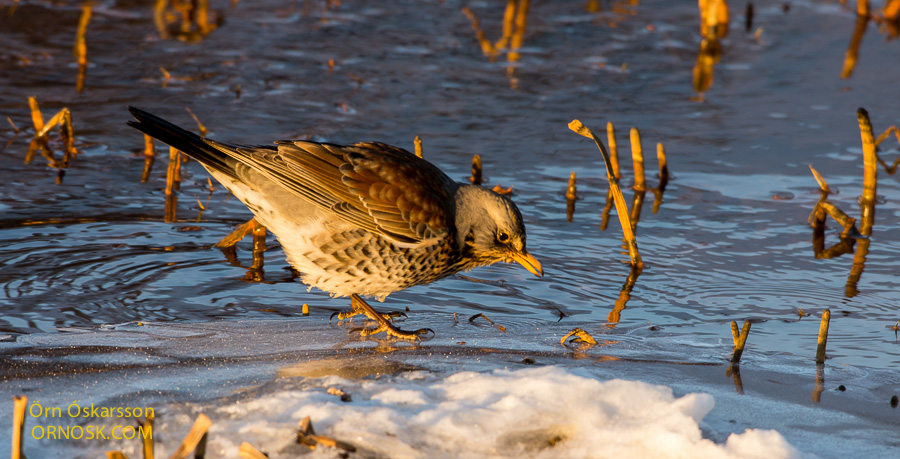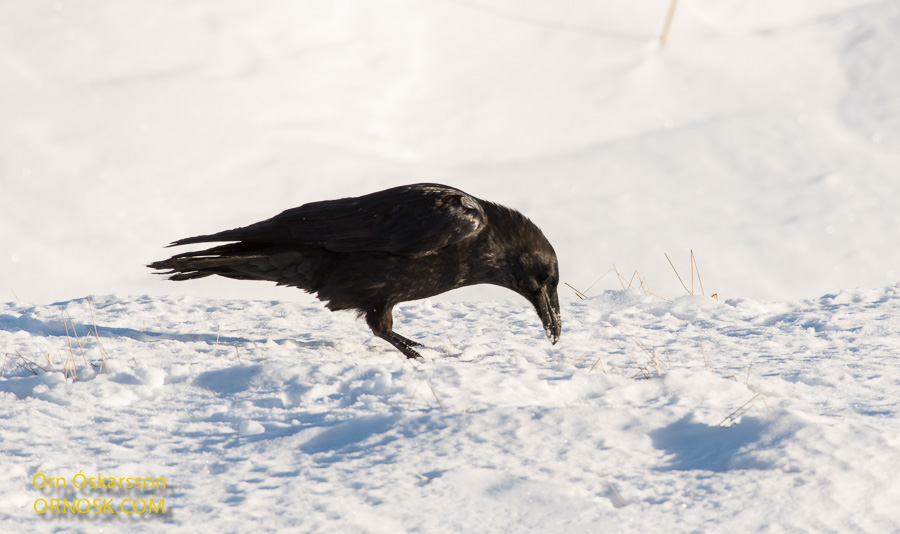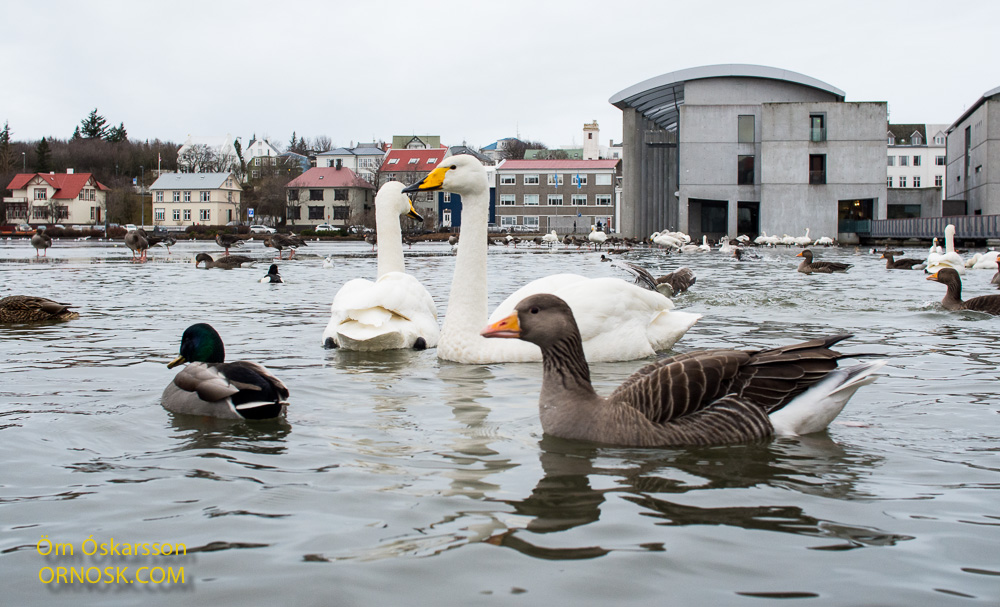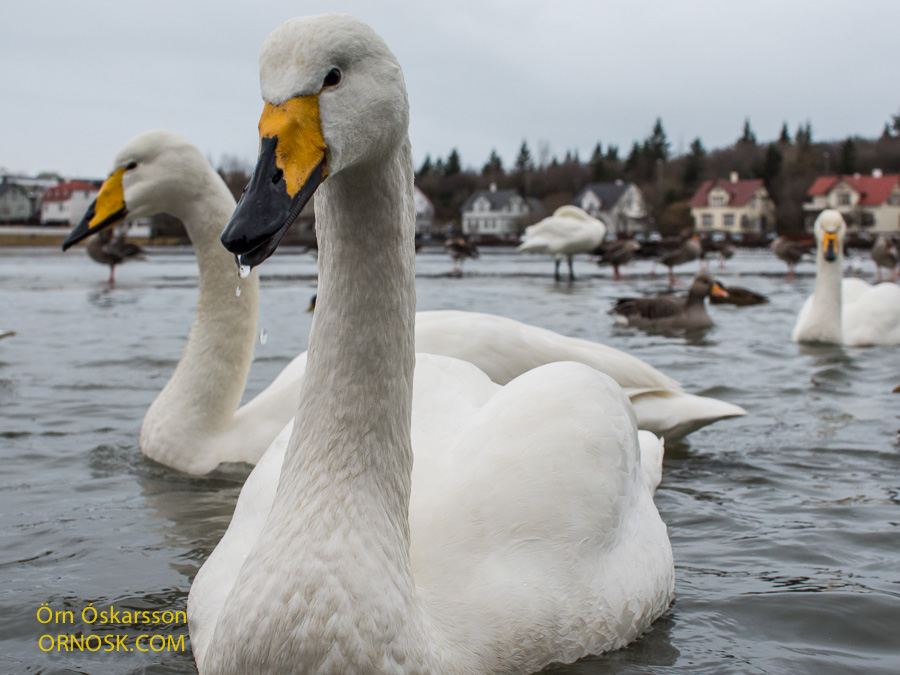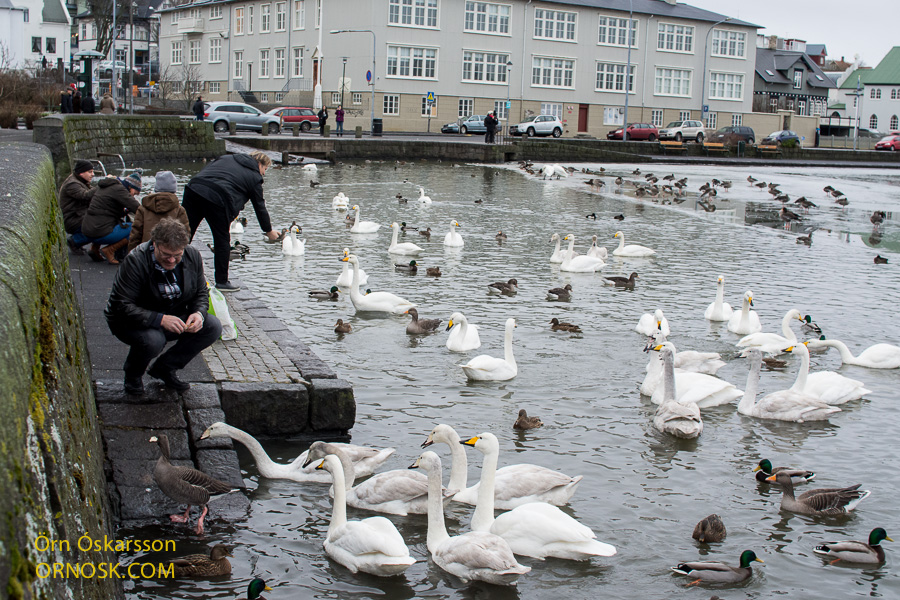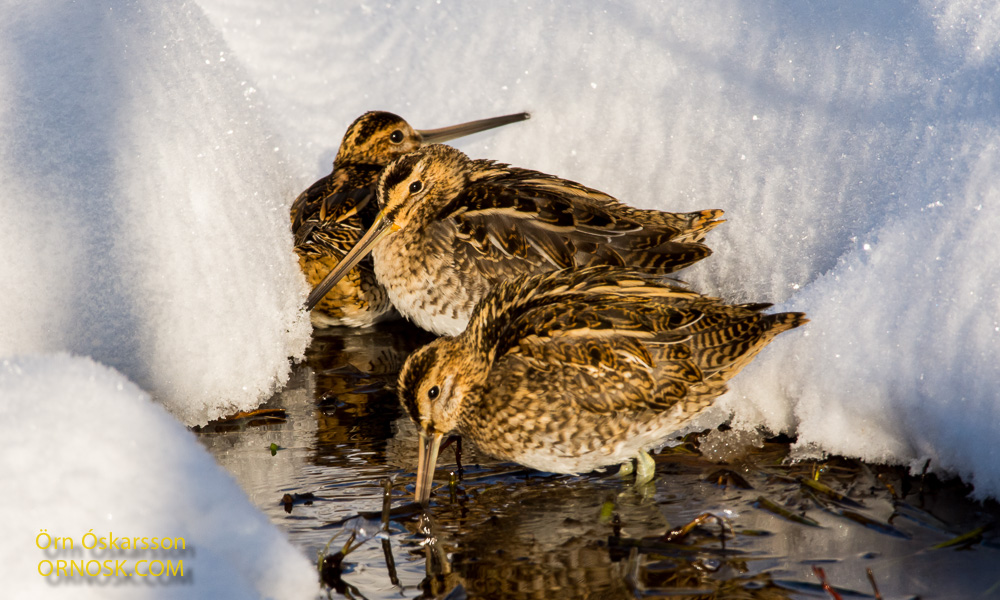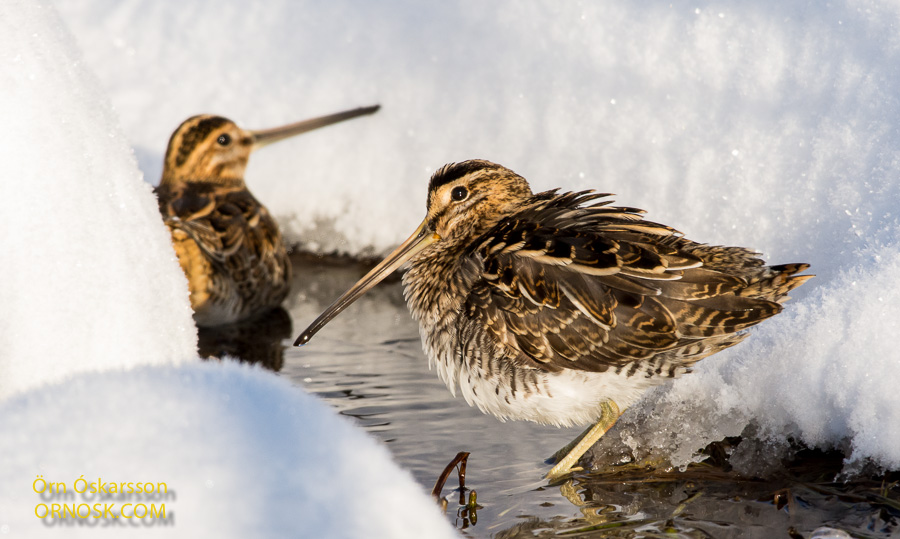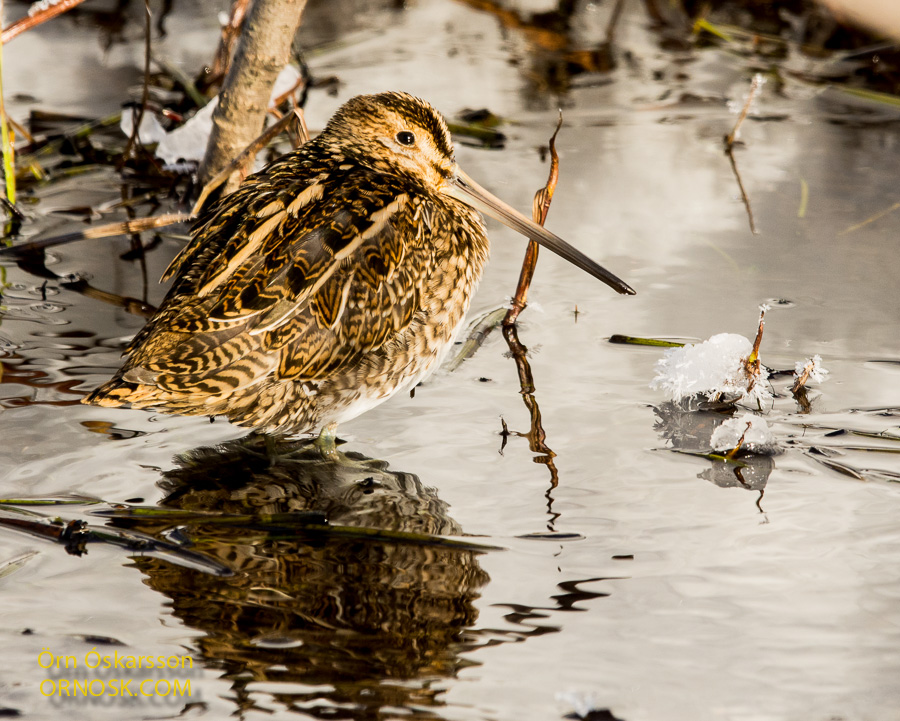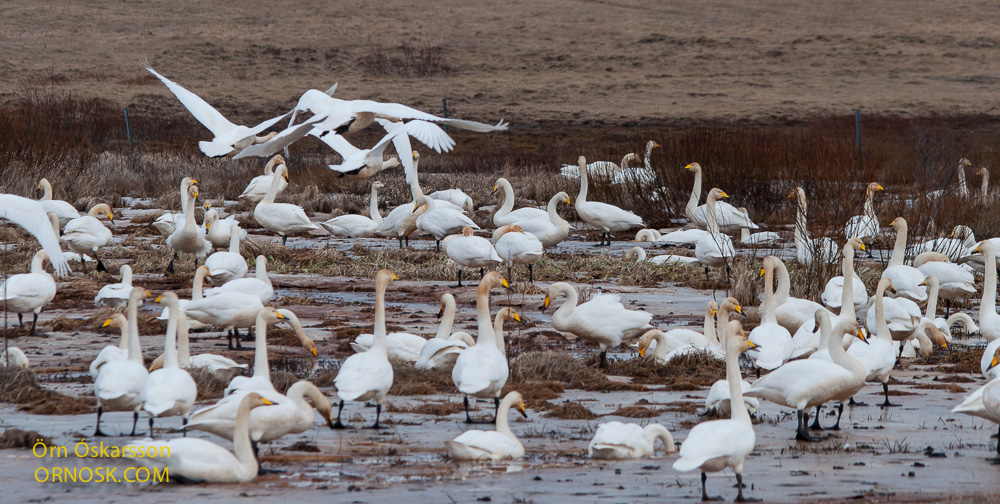
Last weekend flocks of Whooper Swans could be seen flying along the Southeast coast, having just arrived over the Atlantic Ocean. Most Whooper Swans migrate to the British Isles in the autumn and come back in the spring.
Whooper Swans are very common in Iceland and can be seen all over the country. Pairs stay together for life and are true their old breeding places which they return to year after year. The chicks stay with the parents until it comes to the nest making when they chase their chicks from last year away. If the Whooper Swan is disturbed or feels threatened the pair may abandon the nest and eggs.

